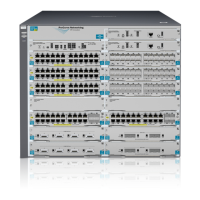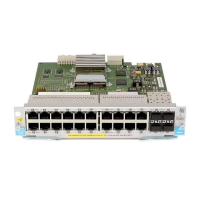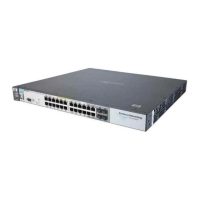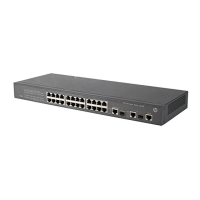5-75
Quality of Service: Managing Bandwidth More Effectively
Advanced Classifier-Based QoS
To manage packets that do not match the match or ignore criteria in any
class in the policy, and therefore have no QoS actions performed on them,
you can enter an optional default class. The default class is placed at the
end of a policy configuration and specifies the QoS actions to perform on
packets that are neither matched nor ignored.
[no] [seq-number] class < ipv4 | ipv6 > <classname >
•[seq-number] — The (optional) seq-number parameter
sequentially orders the QoS actions that you enter in a
policy configuration. Actions are executed on
matching packets in numerical order. Default: QoS
action statements are numbered in increments of 10,
starting at 10.
• class < ipv4 | ipv6 > <classname > — Defines the
preconfigured traffic class on which the QoS actions in
the policy are executed, and specifies whether the QoS
policy is applied to IPv4 or IPv6 traffic in the class. The
classname is a text string (64 characters maximum).
Note: You can configure multiple class action statements
for different traffic classes in the same policy. The execu-
tion of QoS actions is performed in the order in which the
actions are numerically listed in the policy.
action <qos-action > [action <qos-action > ...]
The action keyword configures the QoS action specified by
the qos-action parameter. The action is executed on any
packet that matches the match criteria in the class. The
action is not executed on packets that match ignore
criteria.
The complete no form of the class action command or the
no <seq-number > command removes a QoS action from the
policy configuration.
The following QoS commands are supported by the qos-
action parameter:
• rate-limit <kbps kbps >
• priority < priority-value >
• ip-precedence < precedence-value >
• dscp < dscp-value
For information on the complete syntax of each QoS
command, see “Configuring QoS Actions in a Policy” on
page 5-77.
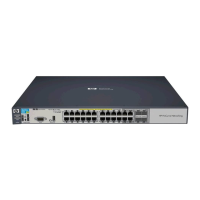
